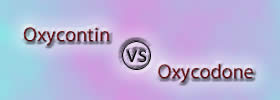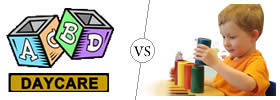Difference between DSL and Cable
Key difference: DSL connects to the net by using the local telephone network, whereas, the cable internet access uses the cable connection.
.jpg)
Digital subscriber line (DSL) and cable are different methods of connecting to the internet. Both are considered high-speed broadband connection. DSL connects to the net by using the local telephone network, whereas, the cable internet access uses the cable connection. However, there are distinctions on each type of access.
DSL uses higher frequency bands on the telephone line to transmit data. This means that the same telephone line can be used to make calls and to connect to the internet simultaneously, as oppose to the traditional dial up connection, where you had to do one or the other. However, to get a good DSL connection, one needs to be close to a telephone hub, meaning that DSL is not available in all areas. Cable internet, on the other hand, uses the cable connection to transmit data. This means that is necessary for a person to have a cable connection before getting cable internet. Also, DSL requires a DSL modem to connect to the internet, and cable requires a cable modem.

Advantages of a DSL connection is that it is cheaper than cable, but is slower. Still, connection on a DSL is fairly stable and is irrespective of the number of users, whereas, cable internet, which is faster and more expensive, is depended on the number of users in the area. If the number of people using cable internet in an area are high, then the internet speed would be much lower, as oppose to if the number of users was lower.
However, to offset the cost of a high speed connection, both DSL and cable offer consolidated packages, i.e. DSL offers a package deal for a phone and internet connection, and cable on cable TV and internet. They consolidate the services on a single bill, in order to offer savings and to entice the consumer to pick their service instead.
Further detailed comparison is as follows:
|
|
DSL |
Cable |
|
Stands for |
Digital subscriber line |
Cable internet access |
|
Internet access |
Provide internet access by transmitting digital data over the wires of a local telephone network using higher frequency bands for data. |
Form of broadband Internet access that uses the cable television infrastructure to transmit digital data |
|
Requirements |
A DSL modem at the customer’s and a DSLAM at the telephone company which concentrates a large number of individual DSL connections into a single box |
A cable modem at the customer’s and a cable modem termination system at a cable operator facility, connected by coaxial cable or a Hybrid Fiber Coaxial (HFC) plant. |
|
Down speed |
Between 256 Kbit/s and 40 Mbit/s depending on DSL technology, line conditions, and service-level implementation. |
As much as 400Mbit/s for business connections, and 100Mbit/s for residential. Varies depending on number of users in the area. |
|
Up speed |
Lower that the down speed |
Between 384kbit/s to more than 20Mbit/s. Varies depending on number of users in the area. |
|
Advantages |
Enables the usage of the unused bandwidth of the local loop connecting the telephone exchange to most subscribers, which is already in place. Cheaper then cable. |
Enables the use of VOIP to cut down costs, ability for high speed downloads, decreased wait times. Faster than DSL. |
Image Courtesy: flickr.com, download.chip.eu









Add new comment